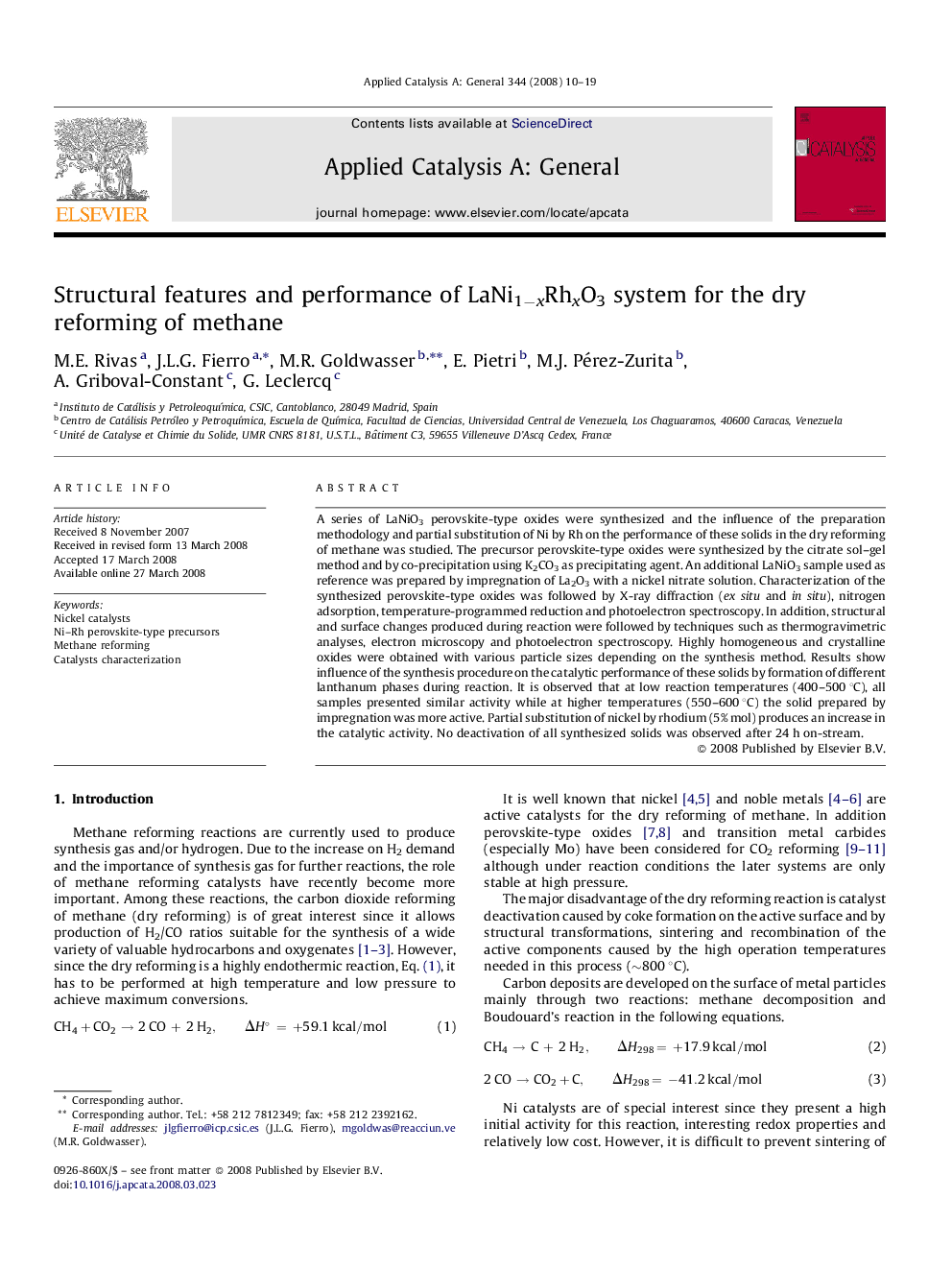| Article ID | Journal | Published Year | Pages | File Type |
|---|---|---|---|---|
| 43095 | Applied Catalysis A: General | 2008 | 10 Pages |
A series of LaNiO3 perovskite-type oxides were synthesized and the influence of the preparation methodology and partial substitution of Ni by Rh on the performance of these solids in the dry reforming of methane was studied. The precursor perovskite-type oxides were synthesized by the citrate sol–gel method and by co-precipitation using K2CO3 as precipitating agent. An additional LaNiO3 sample used as reference was prepared by impregnation of La2O3 with a nickel nitrate solution. Characterization of the synthesized perovskite-type oxides was followed by X-ray diffraction (ex situ and in situ), nitrogen adsorption, temperature-programmed reduction and photoelectron spectroscopy. In addition, structural and surface changes produced during reaction were followed by techniques such as thermogravimetric analyses, electron microscopy and photoelectron spectroscopy. Highly homogeneous and crystalline oxides were obtained with various particle sizes depending on the synthesis method. Results show influence of the synthesis procedure on the catalytic performance of these solids by formation of different lanthanum phases during reaction. It is observed that at low reaction temperatures (400–500 °C), all samples presented similar activity while at higher temperatures (550–600 °C) the solid prepared by impregnation was more active. Partial substitution of nickel by rhodium (5% mol) produces an increase in the catalytic activity. No deactivation of all synthesized solids was observed after 24 h on-stream.
Graphical abstractA series of LaNiO3 perovskite-type oxides were synthesized and the influence of the preparation methodology and partial substitution of Ni by Rh on their performance of these solids in the dry reforming of methane was studied. The precursor mixed-oxides were synthesized by the citrate sol–gel method and by co-precipitation. An additional LaNiO3 sample used as reference was prepared by impregnation of La2O3 with a nickel nitrate solution.Results show influence of the synthesis procedure on the catalytic performance of these solids by formation of different lanthanum phases during reaction. At low temperatures (400–500 °C) LaNiO3 synthesized by co-precipitation produces the most active catalyst while the solid prepared by impregnation was more active at higher temperatures (550–600 °C). Partial substitution of nickel by rhodium (5% mol) produces an increase in the catalytic activity. No deactivation of all synthesized solids was observed after 24 h on-stream.Figure optionsDownload full-size imageDownload as PowerPoint slide
